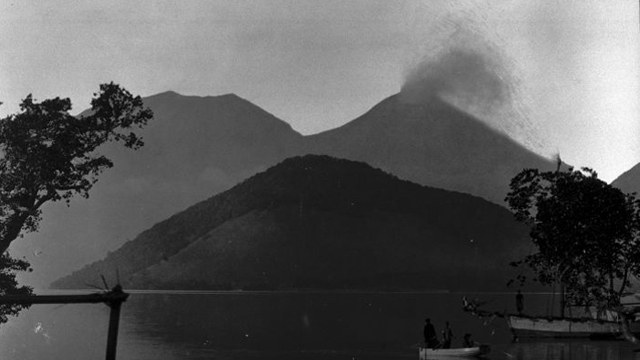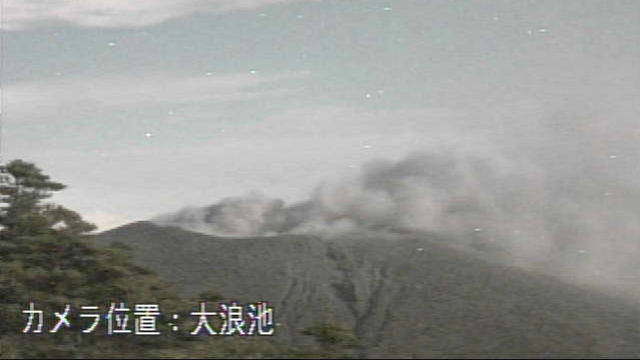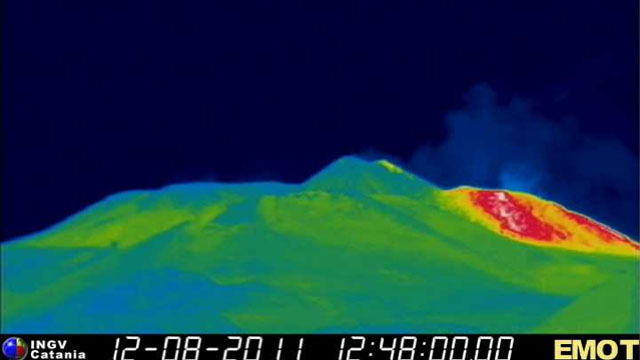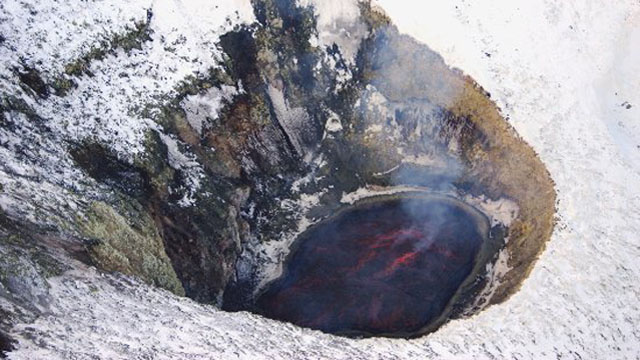Monday Musings: Titan’s ice volcanism, Merapi and the moon, Toba wasn’t so bad and Shiveluch’s plume
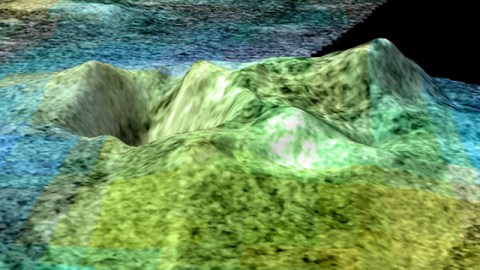
Now that AGU is behind us and that I’ve waded through a lot of grading (over the weekend: 4 sets of labs and one each of papers and homework), I can try to catch back up with piles of news. Oddly, a lot of this news was generated by press conferences or talks at AGU, which I suppose is what to expect when a big conference like AGU occurs.
Before we get to the news, I do have a question for all of you. Next semester, I am teaching an introductory-level volcanoes and human culture class called “Vulcan’s Forge” (points if you recognize that reference) and I am planning on having the students monitor the activity at a volcano each week. So, Eruptions readers, if you had to pick the top 5 volcanoes you’d like to read an extended weekly review on, what would they be? Leave your thoughts in the comments section below.
On to the news …
Titan’s volcano: One press conference I wish I could have attended at AGU was on the discovery on ice volcanoes on Titan. Dr. Randy Kirk (USGS) and the Cassini Mission team has seen evidence in radar images taken of the surface of Saturn’s moon of active “cryovolcanism” – where liquid water (or possibly hydrocarbons) are erupting. The morphology of the flows (see top left) suggest a series of craters and flows that Kirk likens to Laki in Iceland or Etna in Italy. The volcano, called Sota Facula, is one of the first real evidence we’ve found for effusive cryovolcanism in the solar system, although it is though that the ridges on Europa might be similar. Many of the other examples of cryovolcanism observed so far have been on the explosive variety, such as the plumes on Enceladus and Neptune’s Triton. All this flowing, warm water on Titan – along with the presence of Ontario Lacus (“Lake Ontario”) – does make it seem like a decent place to look for life in the solar system.
Lunar eclipse: As many of you know, tonight is a lunar eclipse (visible quite well over North America) – the first lunar eclipse to coincidence with the winter solstice (in the northern hemisphere) in over 500 years. That, in itself, is pretty cool, but there is also the chance that the eclipse will be especially colorful this year thanks to the volcanic ash/aerosols put into the atmosphere by the eruption of Merapi earlier this fall. So, key your eyes on the sky tonight for the eclipse!
Toba: Another AGU-related brief keeps the debate about just how bad the Toba eruption over 74,000 years ago might have been to the global climate. There are proponents of the idea that the eruption caused a 1,000 year winter that caused a “bottleneck” in human population (although most anthropologists I know don’t buy it). However, Dr. Claudia Timmreck and others at the Max Planck Institute has new climate models for the eruption that suggest that the global cooling might have only lasted 2-3 years with less than 50% of the temperature drop suggested by other researchers. Of course, a lot of this is dependent on how well we think we know the sulfur dioxide output of the Toba eruption – which we really don’t – but in either scenario, the eruption did cause significant changes to the global climate, just possibly on a shorter timescale than previously thought.
Kamchatka and the Weekly Volcanic Activity Report: After being caught up with everything at the meeting, I realized I never posted a link to the GVP Weekly Volcanic Activity Report (by the way, how did the report get out when I was talking to Sally Kuhn Sennert in San Francisco maybe 20 minutes before I saw it in my email box?) Last week’s report, was, as usual, filled with news from Kamchatka – there was observed activity at Kizimen, Bezymianny, Karymsky and Kliuchevskoi. We also have a report on activity at Shiveluch, which was quite impressive, at least looking at the picture provided to KVERT to M. Randolph Kruger (see below; many thanks to both). Overall, it looks like a dome collapse that generated a plume that reached as high as 5 km / 16,000 feet to go with it. Meanwhile, Kizimen did produce ash that deposited up to 5 mm of ash deposited as far as 300 km away. You can see a “before” picture of Kizimen as well (again, courtesy of KVERT).

Shiveluch erupting during December 2010. Click here to see a larger version. Image courtesy of KVERT.
Top left: Radar image acquired by the NASA Cassini orbiter of Titan’s Sota Facula.
